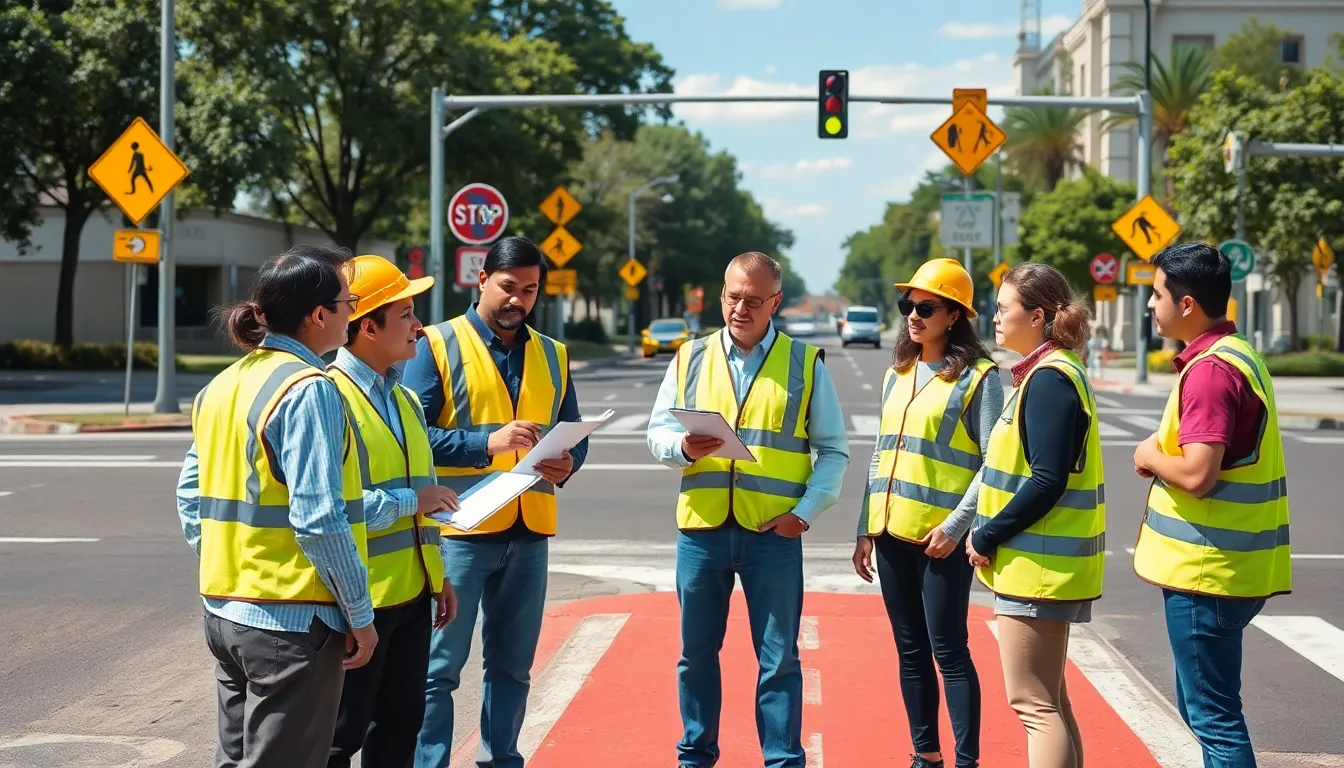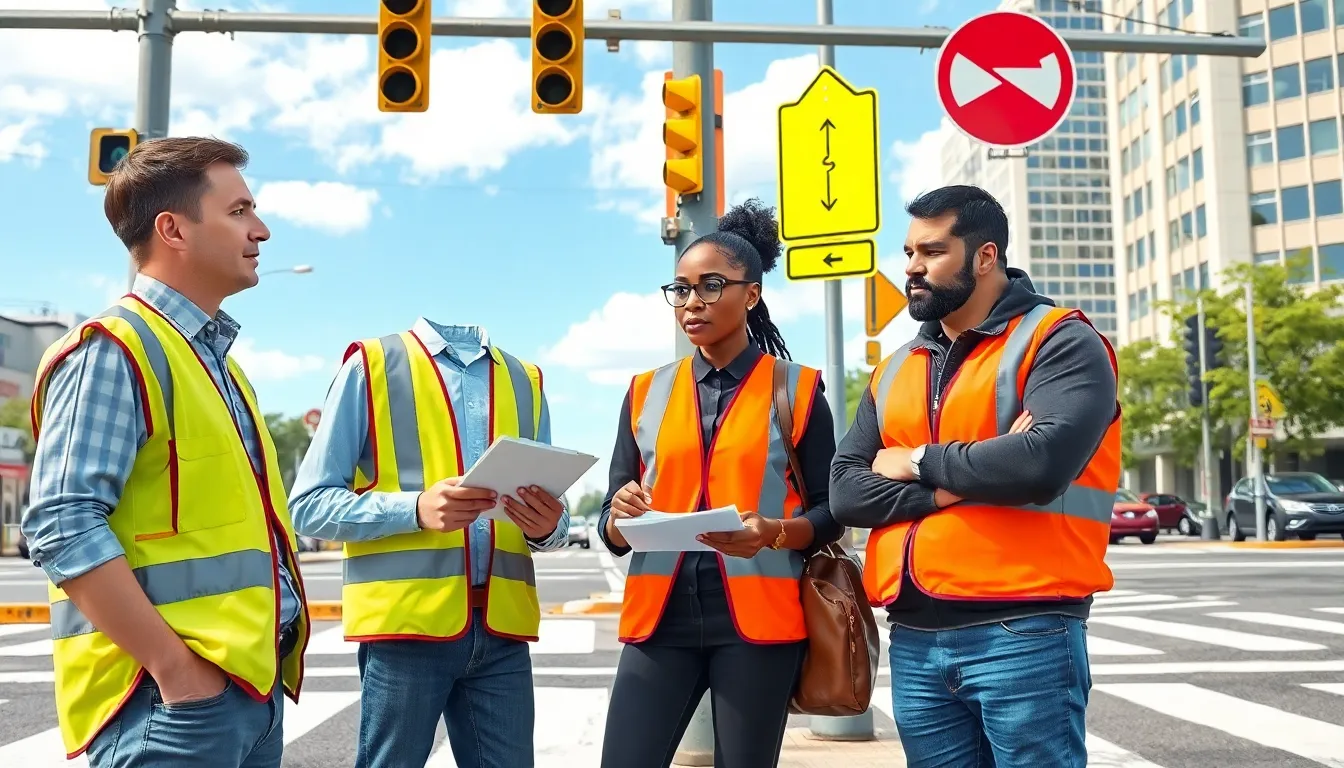Road safety audits might sound like a snooze-fest, but they’re the unsung heroes of our highways. Imagine a superhero in a reflective vest, swooping in to save the day by identifying hazards before they wreak havoc. With the number of vehicles on the road skyrocketing, ensuring safety isn’t just a nice-to-have; it’s a must-have.
Road Safety Audit
Road safety audits systematically evaluate road designs and operations to identify potential hazards. These assessments help enhance overall safety and minimize risks associated with road use.
Definition And Purpose
A road safety audit represents a formal examination of road projects conducted by a qualified team. This audit aims to identify safety issues prior to construction or significant modifications. The evaluation process considers various factors, including road geometry, signage, and surface conditions. By addressing these elements early, road safety audits contribute to more effective design and implementation, mitigating risks for all road users.
Importance Of Road Safety Audits
Road safety audits play a vital role in accident prevention. With more vehicles on the road, identifying hazards becomes increasingly essential. Statistics indicate that roads designed without comprehensive audits may experience higher accident rates. These audits contribute to a proactive approach in safety management, which leads to reduced fatalities and injuries. Stakeholders, including government agencies and private developers, recognize the significance of audits in fostering safer driving environments. Consequently, integrating road safety audits into planning processes can significantly enhance road safety outcomes.
Key Components Of A Road Safety Audit


Road safety audits consist of various critical components that ensure thorough evaluation and analysis of road safety. Understanding these components can enhance the effectiveness of the audit process.
Audit Phases
Three essential phases characterize road safety audits: planning, field inspection, and reporting. Planning encompasses defining the audit’s scope and gathering necessary background data. Field inspection involves a comprehensive on-site assessment, examining the road, traffic patterns, and surrounding environment. Reporting consolidates findings and recommendations into a detailed document, highlighting safety issues and proposed solutions.
Evaluation Criteria
Evaluation criteria guide the audit process, focusing on specific roadway elements. Factors include road geometry, signage visibility, pedestrian facilities, and surface conditions. Each criterion assesses how these elements contribute to safety. Analyzing traffic volume and accident history also plays a significant role in identifying high-risk areas. Furthermore, compliance with relevant standards and guidelines ensures that the road design promotes safety for all users.
Benefits Of Conducting Road Safety Audits
Road safety audits significantly improve highway safety by systematically identifying hazards before issues arise. They serve as a proactive measure, enhancing public safety through careful examination and evaluation of existing and proposed road designs.
Enhancing Public Safety
Enhanced public safety emerges as a primary benefit of road safety audits. Auditors assess roadway designs and operational features to ensure they meet safety standards. Evaluating elements such as sight distances and signage placement helps mitigate potential risks. Identifying hazardous locations allows stakeholders to implement corrective measures promptly. Increased community awareness of road safety promotes adherence to traffic regulations. Stakeholders, including local authorities, support these audits as they visibly demonstrate a commitment to protecting citizens.
Reducing Accidents And Injuries
Efforts to reduce accidents and injuries relate directly to the thorough processes of road safety audits. By examining accident history alongside traffic volume data, auditors pinpoint high-risk areas. They provide tailored recommendations for adjustments like improved signage and enhanced lighting. Such measures directly influence driver behavior, leading to safer road conditions. Comprehensive audits contribute to significant decreases in accident rates over time. By prioritizing safety through these evaluations, communities can anticipate a measurable reduction in serious injuries and fatalities.
Challenges In Implementing Road Safety Audits
Implementing road safety audits presents various challenges that hinder their effectiveness. Recognizing these obstacles helps stakeholders better navigate the audit process.
Common Obstacles
Limited funding often restricts the implementation of comprehensive audits. In addition, the lack of trained professionals can delay the audit process, leading to inadequate evaluations. Stakeholders sometimes overlook the importance of involving the community, which diminishes awareness and support for road safety initiatives. Moreover, differing standards and regulations across jurisdictions can complicate coordination and consistency during audits. Resistance to change from local authorities may also create hurdles, as stakeholders face difficulties in persuading involved parties to adopt new recommendations.
Solutions And Best Practices
Engaging in community outreach proves beneficial for gaining support and attendance at audits. Obtaining funding through grants or partnerships can enhance audit effectiveness and reach. Incorporating technology, like data analytics tools, streamlines data collection and analysis, making the audit process more efficient. Establishing clear communication channels fosters collaboration between stakeholders and local authorities, ensuring alignment on objectives. Lastly, ongoing training for road safety audit teams ensures they are well-equipped to identify emerging issues and implement best practices.


